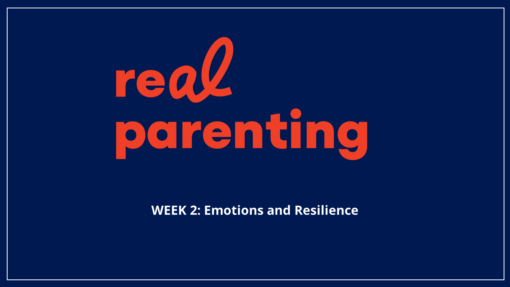Real Parenting Week 2: Emotions and specific praise

Week 2 Emotions and specific praise
Last week we looked at how the human brain is divided into the logical part of the brain (the frontal cortex) and the emotional part of the brain (limbic system and amygdala). We touched on how the emotional part of the brain doesn’t use words or language – which is why adverts often use very few words to sell even expensive items like cars.
This week we’ll develop that principle by looking at emotions, and emotional resilience, in the first part of the session.
The logical part of the brain is undeveloped during childhood. Parents and carers can help a child to learn how to manage even strong emotions like fear or anger by teaching them words to describe their emotions. As a child learns more and more words to describe emotions, it develops the logical part of the child’s brain, which empowers the child to recognise and manage their own emotions.
In the second part of the session we’ll start looking at behaviour managment using specific and positive praise.
7:30 Welcome
7:40 Review
Hold up a copy of the One-to-one time diary which you handed out last week.
Ask:
- Did anyone have any unexpected results after last week? This can be anything, not just one-to-one time.
- Does anyone have anything to share specifically about one-to-one time?
- Do any of the parents have any questions about the homework or about anything else about last week?
7:50 Video:
Emotions
8:00 Presentation about emotions
You now give a brief presentation about emotions.
8:05 Exercise in pairs
Assign the parents into pairs and ask them to turn to the Emotions exercise in their Parenting Workbooks. Remind the parents that there are likely to be different parenting styles and to support each other and to suggest ideas based on what they are learning in the course.
In their pairs, ask them to spend ten minutes to:
- Write down a strong emotion that their child(ren) experience(s);
- Discuss together how they could handle the situation, using the Emotions “Focus, guidance and top tips” given in their workbooks.
8:15 Exercise: Part 2
After ten minutes ask the parents to spend another five minutes on what they could do or say after the child has calmed down to help them learn how to manage their emotions.
8:20 Group discussion
Bring the pairs back into the group as a whole and ask them:
- Did anyone deal with anger? Anxiety? Sibling rivalry? Any other strong emotions?
- What were some of the strategies the parents came up with to handle these emotions while the child was still experiencing them? These strategies are likely to differ according to age and perhaps other factors, and parents might well get great ideas from other parents!
- Did anyone have any ideas for what to do once the situation had calmed down to help their child learn how to manage their own emotions?
8:30 15 minute break
8:45 Video:
Specific praise
8:55 PowerPoint presentation
You now give a brief presentation about Specific praise.
9:00 Praise phrase group exercise
Use the flip chart. Draw a vertical line down the middle and on the left-hand side title it “Common ‘Don’t’ Phrases”. Ask them to come up with examples, and then convert them to positive comments.
Ask them to think of a common situation they often find themselves in when they tell their child “Don’t….” and in their groups write down on post-it notes a common ‘don’t phrase’ that they use.
9:15 Homework and goodbye
Hand out copies of the One-to-one time diary, explain how to use it and ask them to fill it in over the week for discussion next week.














